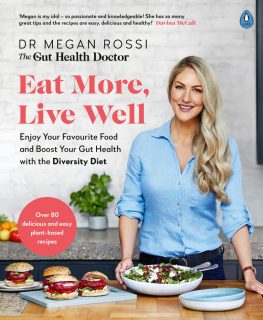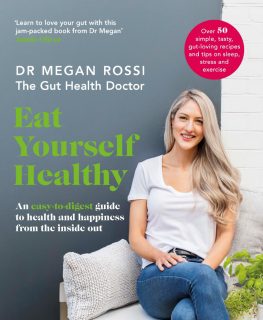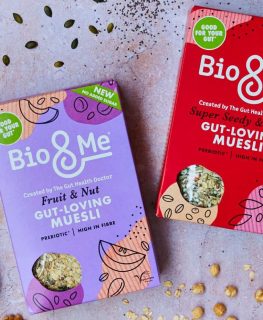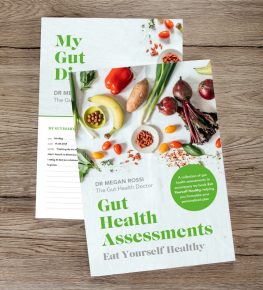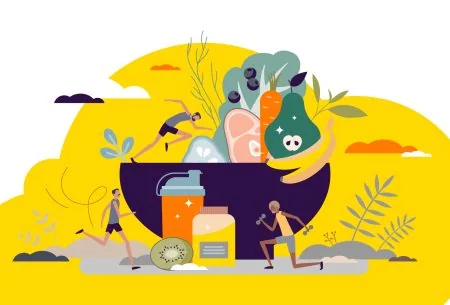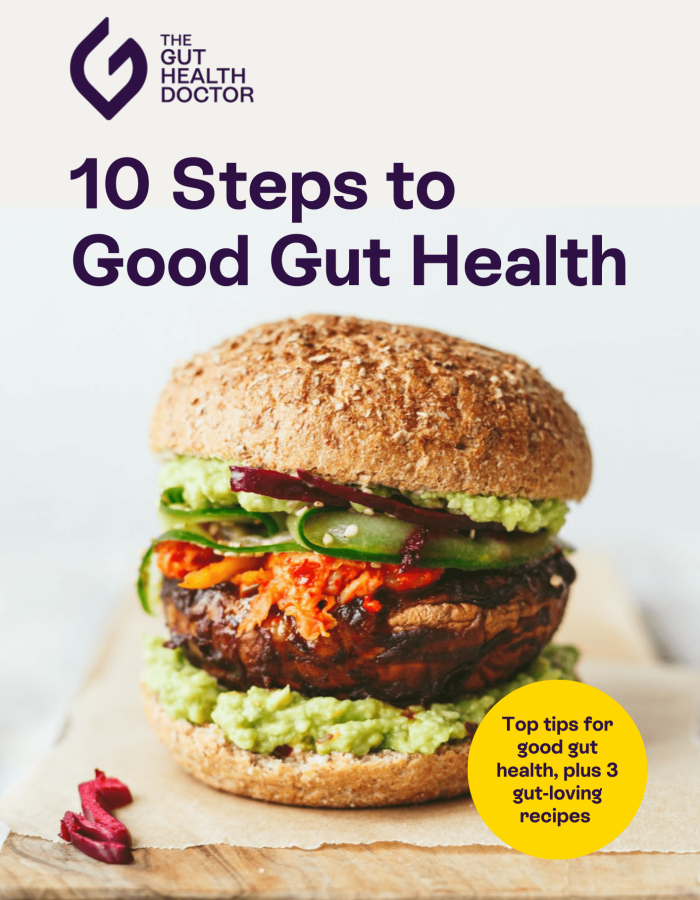For good gut health, think plant points! You may think achieving 30 plant points a week across different plant-based foods a week sounds time-consuming, expensive and clinical. But the reality is that it is not only a lot cheaper, easier and tastier than you might think and can lead to huge health gains, from mood boosting and hormone regulation to longevity and better performance all round. Need more convincing? Check out this article on how connected and important your gut is.
Plant points: how to get 30 a week & why
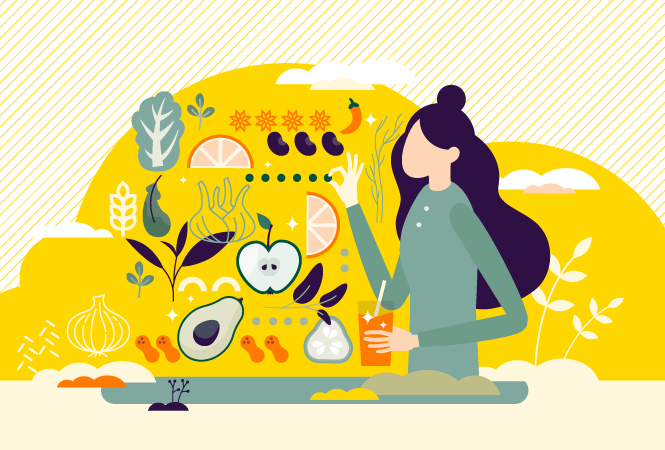

Why 30 plant points?
We’ve all heard of the importance of getting our ‘5-a-day’ — and it can be a good place to start — but in truth it is a little outdated as it totally ignores the 40 trillion microbes living in our gut, which all need different types of plant foods to flourish. Each type of bacteria (known as a strain) performs a different job, and each strain likes a different kind of plant food. So when we consider this, then the more diverse plant foods we feed our gut bacteria, the more diverse they can become and the more ‘skills’ they have to…
- Train our immune cells (of which 70% live in our gut!)
- Increase our resilience to infection
- Strengthen our gut barrier
- Produce vitamins and help regulate our hormones
- Communicate with our brain
- Balance our blood sugar, lower blood fats and help prevent against many diseases
And that’s only the start of the thousands of responsibilities they have.
When a key study demonstrated that people who eat at least 30 different plant-based foods a week had more diverse gut microbes than people who ate less than 10, we tested it out in The Gut Health Clinic. While the number is by no means black or white, 30 has definitely proven to be an effective target and so we created our plant point system! We’ve seen clients who have achieved 30 plant points dramatically transform in a matter of weeks: their energy, skin and confidence are all boosted, which is one of the best feelings as a clinician.

Firstly, what constitutes a plant point?
A plant is a food that has been grown. There are six main plant groups, which we call the Super Six: vegetables, fruits, wholegrains, legumes (beans and pulses), nuts and seeds and herbs and spices. Researchers at the University of Bergen found that eating across the Super Six can add up to a decade of healthy years to your life.
We are not suggesting that people need to go vegetarian, rather that everyone incorporates more plant foods around their protein sources, whether that includes meat and fish or not. Lots of vegetarians and vegans also need to increase their plant diversity — so this is for everyone!
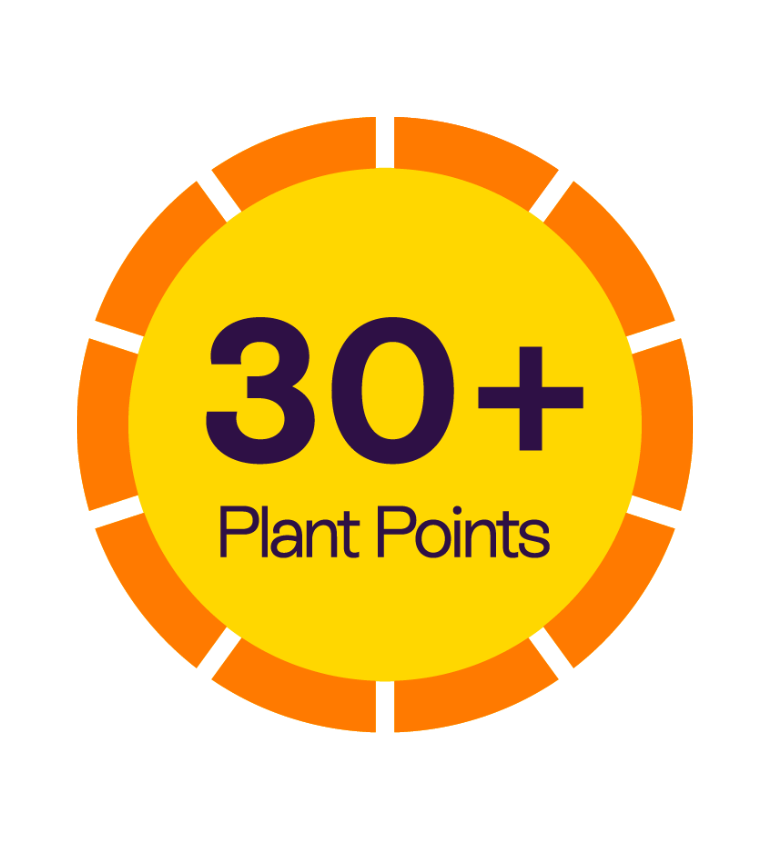
What is a plant point and how do you calculate yours?
To translate the science of plant diversity, we created a plant points system. This is essentially a fun way to tally up your different plants across the week to give you a score. All your Super Six count towards your weekly plant-point goals. Each plant counts as 1 point, while herb and spices count as ¼. Some things to remember:
- Points are given for each different variety of plant — so if you eat two red apples, it only counts as one point
- Different coloured fruit and vegetables (such as red and green apples) count as a new point
- Fresh, dried, canned and frozen plants all count (always aim for no-added salt and sugar)
- Extra virgin olive oil, tea and coffee, garlic count as ¼ point (like herbs and spices)
- Vegetable stock counts as 1/2 point
- Refined plants such as fruit and vegetable juices, white grains, etc. don’t count so try and stick to your whole foods
- Start by focusing on diversity and not getting caught up about portion sizes at this stage, that can be a focus point when you’ve reached your diversity targets
What could 30 plant points look like?
VEGETABLES
- Green beans
- Beetroot
- Rocket
- Sweet potato
- Courgettes
- Carrots
- Mushrooms
- Red pepper
- Red onion
- Broccoli
- Peas
- Spinach
- Kale
FRUITS
- Blueberries
- Stawberries
- Kiwi Fruit
- Dates
- Bananas
- Oranges
- Apples
- Pears
- Cherries
- Blackberries
- Plums
- Melon
WHOLEGRAINS
- Quinoa
- Buckwheat
- Oats
- Barley
- Wheatberries
- Wholegrain Bread
LEGUMES
- Chickpeas
- Kidney beans
- Black beans
- Cannellini beans
- Adzuki beans
- Butterbeans
- Black-eyed beans
- Brown/Green/Red/ Yellow lentils
NUTS AND SEEDS
- Sunflower seeds
- Pumpkin seeds
- Hemp seeds
- Linseeds
- Poppy seeds
- Sesame seeds
- Chia seeds
- Flax seeds
- Hazelnuts
- Walnuts
- Almonds
- Pistachios
- Cashews
- Brazil nuts
Plus obviously lots of herbs and spices (like rosemary, paprika and even black pepper) to add flavour and extra plant point power!
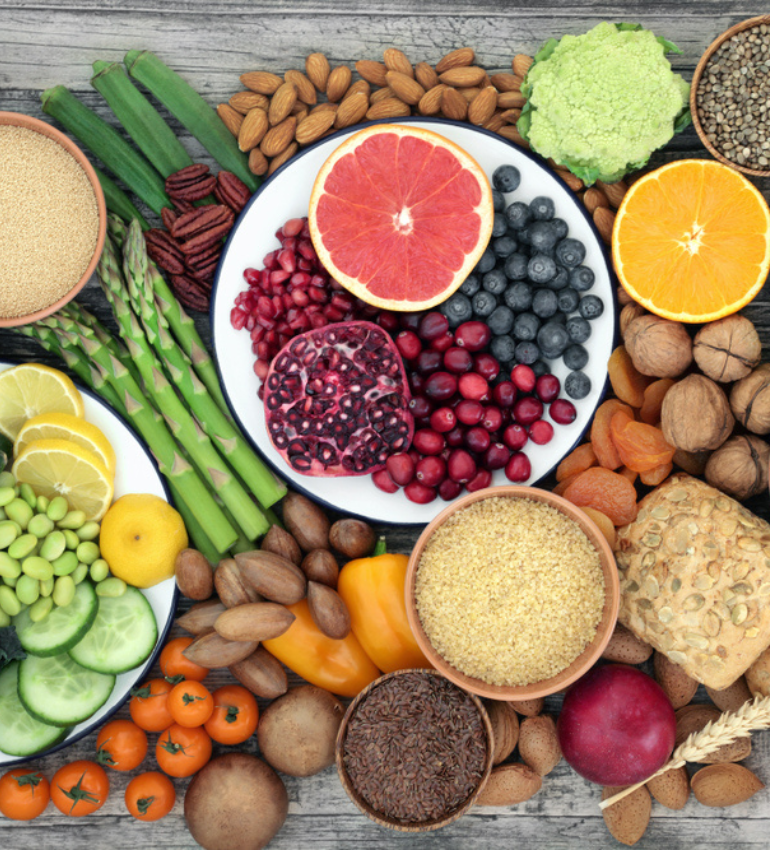
Takeaway
We can be creatures of habit and it’s easy to get into a food rut – especially when we’re busy. Online shopping allows us to order the same food week after week, and most of us end up making the same 4-5 meals on rotation. But good gut health does NOT need to be time-consuming, unappetising or costly (no expensive supplements here) – simple changes can make a big difference as we witness first hand in The Gut Health Clinic.
A good place to start is to think about what you’ve eaten so far today. How many plant points have you had? Let’s say you had some porridge (1 point) for breakfast. Could you slice up a banana and sprinkle it with nuts, seeds and cinnamon? Bingo: 3 ¼ extra plant points!
Once you get started on your journey to good gut health, you will find that achieving your 30 plant points a week becomes second nature: it’s simple, it’s flavoursome and it’s wonderfully effective.
‘Eat Move, Live Well’ has more information on plant-based eating, as well as 80 gut-loving recipes. Also check out ‘9 micro steps to health magic in 2023‘ for other tips and tricks’.

Are you burdened by bloating?
Now available on-demand, Dr Megan Rossi’s (PhD, RD) Bloating Masterclass will guide you on a journey to better master your bloating. Through 18 digestible lessons ranging from 5 to 20 minutes, you can access the guidance, tools and expert resources you need to feel more confident, comfortable and in control of your bloating.
For all enquiries, please email [email protected].


